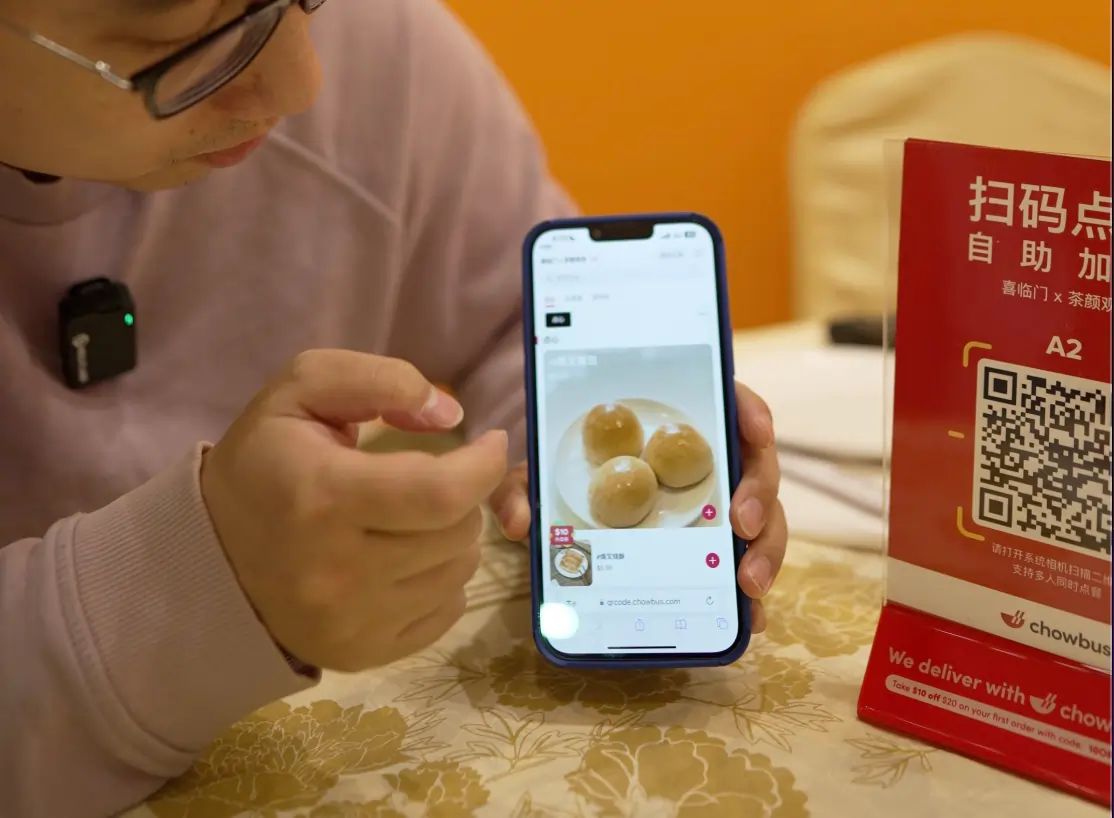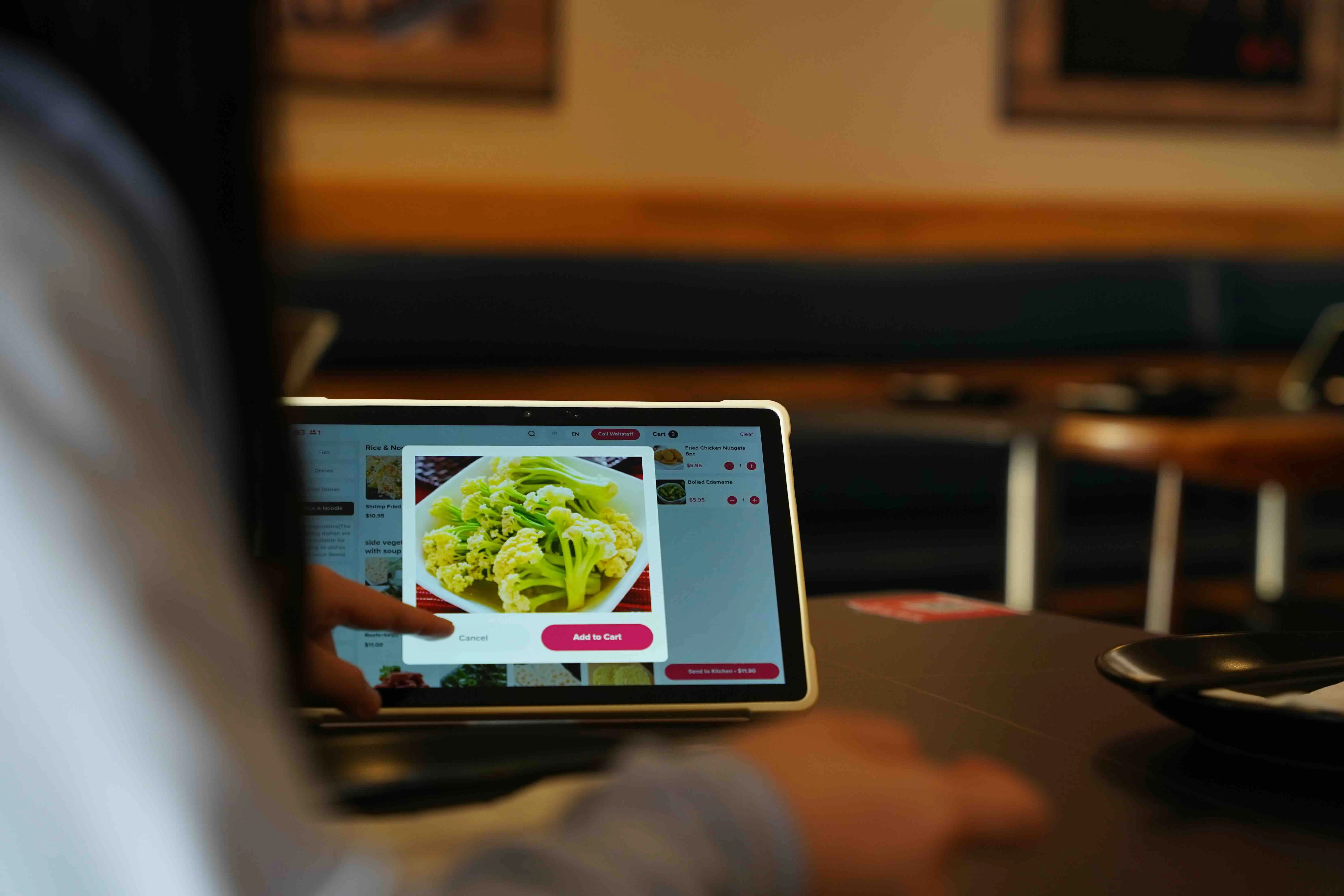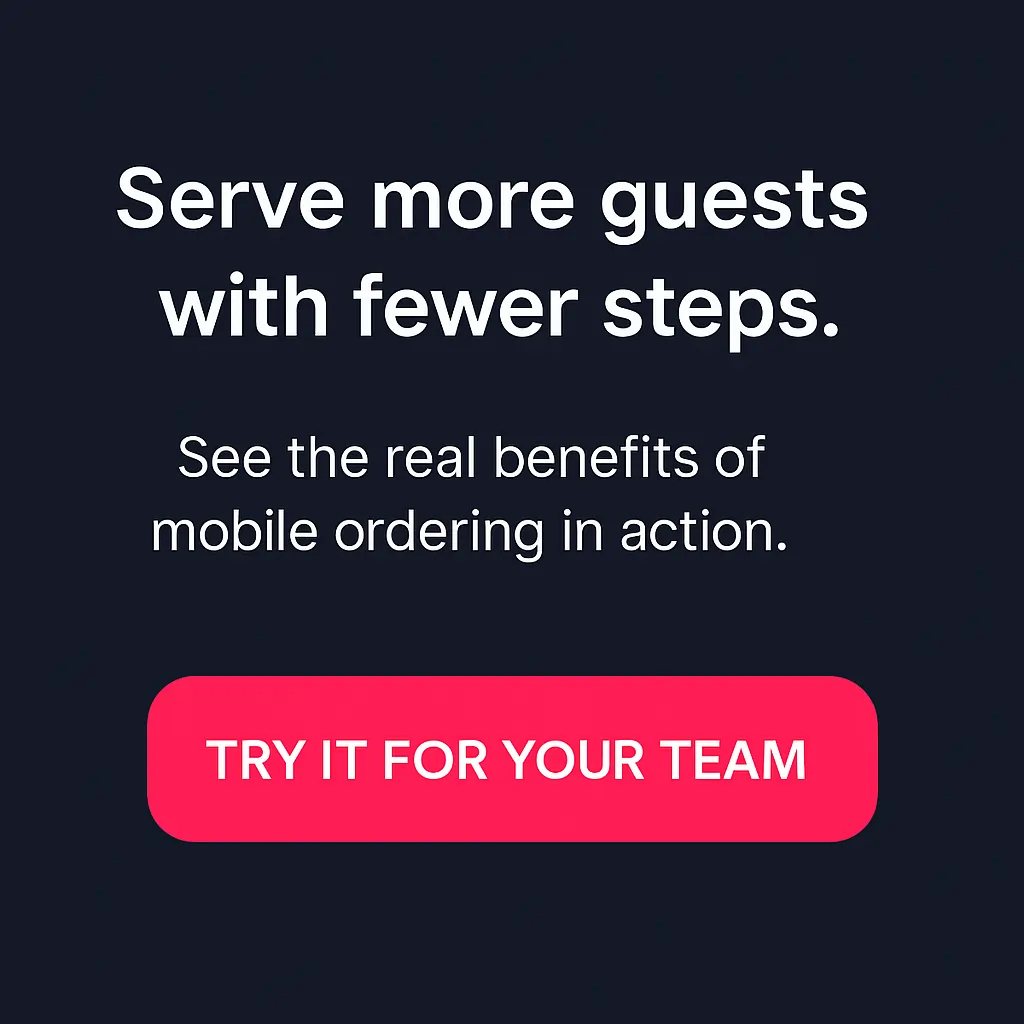
Slow service, overwhelmed staff, and missed orders don’t just frustrate guests; they hurt your bottom line. If you’re looking for practical ways to streamline operations, improve accuracy, and sell more with less effort, mobile ordering might be the tool you need. In this post, you’ll learn the real benefits of mobile ordering, how it helps improve service and efficiency, and where to start.
So, what is mobile ordering, and how does it actually work in a restaurant setting? Let’s break it down clearly so you can decide if it’s right for your business.

Mobile ordering lets your customers place and pay for their food using their phone. It works through your restaurant’s website, branded app, or a QR code placed on a table, sign, or receipt. Once an order is placed, it goes directly to your POS or kitchen display system.
There’s no need to wait in line, flag down staff, or repeat an order multiple times. Guests browse your menu at their own pace, select what they want, customize it, and complete payment all from their own device.
Here’s how it usually works:
This process reduces delays, minimizes mistakes, and frees up your staff to focus on food preparation and service. It’s simple for guests and efficient for your team.

Let’s look at the benefits of mobile ordering from a business owner’s perspective, especially if you’re managing a tight team or aiming to scale efficiently.
When customers can order and pay on their own, your staff spends less time taking orders and more time preparing food or providing service. That means shorter wait times, especially during lunch or dinner rush.
For quick-service or fast casual operations, this is a major time-saver — and it helps move more customers through your location without adding pressure on staff.
Manual order-taking often leads to mistakes: items misheard, customizations missed, or tickets lost during a busy shift.
With mobile ordering, the customer inputs exactly what they want, and it goes straight to the kitchen. Fewer errors mean fewer remakes, faster turnaround, and happier guests.
Mobile menus make it easy to upsell, think of prompts like “Add extra cheese?” or “Make it a combo for $2 more.” These small nudges often lead to larger ticket sizes without any extra effort from your staff.
Many restaurants report that mobile orders tend to be more complete and include more add-ons compared to counter orders.
Hiring and retaining staff has never been harder — or more expensive. Mobile ordering helps reduce the need for additional front-of-house staff during busy times, allowing you to do more with fewer people.
For independents or small teams, this can mean real savings without compromising service.
Mobile orders often come with customer profiles: names, preferences, and past purchases. This data can power loyalty programs, targeted promos, or simple things like remembering a customer’s last order.
It helps turn first-timers into repeat visitors and gives you more control over your marketing.

Customer behavior has changed. Many expect to place orders from their phones without waiting in line or relying on staff. What used to be optional now feels expected.
Delays, order confusion, and long lines turn guests away. Mobile ordering helps prevent that by giving people faster, more flexible ways to interact with your restaurant.
If your competitors offer mobile ordering and you don’t, you’re giving them an edge. Here's why it makes a difference now more than ever:
Offering mobile ordering isn’t just about meeting demand. It’s about keeping pace with what your guests now expect as the baseline.
Setting up mobile ordering doesn't have to slow things down. With the right plan, you can roll it out quickly and see results without disrupting daily operations. Here's how to get started:
Start by selecting a mobile ordering system that suits your business. Look for one that integrates smoothly with your current POS, handles in-store and online orders, and supports custom menus. A unified system reduces the need to juggle multiple tools.
Ensure your POS system connects directly to the mobile ordering platform. Orders should be sent directly to your kitchen display or ticket printer, just as with in-person orders. This keeps everything in one workflow and avoids confusion for your staff.
Keep your digital menu focused. Use clear item names, short descriptions, and high-quality photos. Group items logically so guests can place orders without help. Highlight popular add-ons or meal upgrades to increase average order size.
Walk your team through the new process. Show them how to support guests who order from their phones, and how to manage mobile orders efficiently in the kitchen and at pickup. Clear roles help everything run smoothly.
Let people know they can now order from their phones. Use table tents, window decals, bag stuffers, and social media to spread the word. Keep the message simple: faster orders, less waiting.
Run a soft launch with limited hours or a smaller menu. Collect feedback from staff and customers. Tweak the flow before promoting it widely. This helps you avoid early issues and build momentum.

Mobile ordering offers more than just convenience for your guests. It creates a smoother experience for your team, reduces strain during peak hours, and opens new ways to grow revenue without adding pressure on your staff. From shorter wait times to better order accuracy and higher ticket sizes, the benefits are practical and easy to measure.
Getting started doesn’t require a major shift. It just requires the right tools and a simple plan.
Chowbus POS makes mobile ordering simple by connecting it directly to your restaurant’s point-of-sale system. No switching between platforms, no extra training headaches—just one system that helps you work smarter.
Book a Free Demo with Chowbus POS today and see how mobile ordering can support your daily operations and long-term goals.
If you’re considering mobile ordering for your restaurant, a few common concerns probably come to mind. Here are clear answers to help you move forward with confidence.
No, you don't need an app. You can offer mobile ordering through a mobile-friendly website, online ordering platform, or QR code system—no downloads required. An app can enhance the experience but isn’t necessary to get started.
No. Mobile ordering speeds up service by reducing lines and freeing staff from manual order-taking. Orders go directly to the kitchen, which helps improve accuracy and turnaround time.
Many do. The key is keeping the interface simple and the process clear. If your team can explain how it works in a few words, most guests will give it a try. Placing a QR code with a short prompt at the counter or on tables helps too.
Yes. Mobile ordering uses encrypted payment processing and secure data handling to protect customer information, just like other trusted online checkout systems.
Setup is usually quick. Most platforms guide you through each step, from menu setup to payment integration. A reliable POS provider like Chowbus can help with configuration, staff training, and promotional tools, so you’re up and running without hassle.
Want to learn more about how mobile tools can improve your restaurant’s efficiency and customer experience? Visit our blog for more updates, tips, and practical guides.

Recommended Articles: